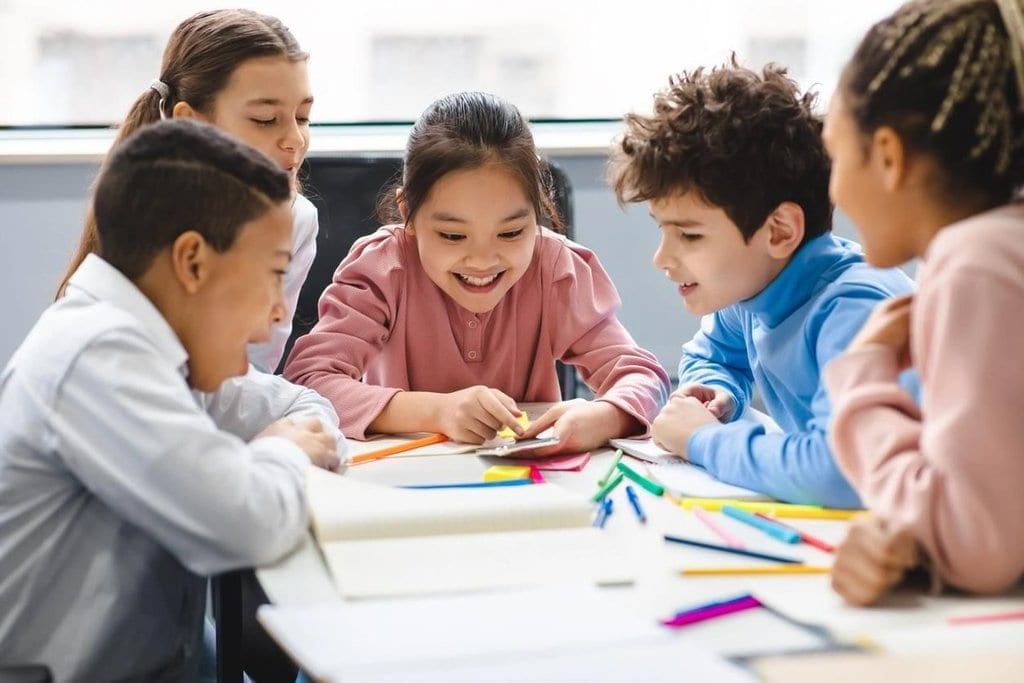Relationships & Processes Within Schools | Sociology for A Level - Year 13 PDF Download
| Table of contents |

|
| Processes |

|
| Labelling |

|
| Categorisations |

|
| Student Experience |

|
Processes
Hidden Curriculum
- The hidden curriculum refers to the informal education in schools that socializes children into societal norms.
- Various internal factors within schools shape the experiences of students and teachers. These include subcultures, pupil identities, and the school's organizational structure.
- The hidden curriculum equips children for adult life by teaching them to navigate bureaucracy, adhere to rules, meet expectations, take turns, and remain seated for extended periods. Schools in different cultural contexts socialize children in ways that align with the norms of those societies.
School Ethos
- A school's ethos encompasses the unique characteristics that define its identity, such as a focus on high academic achievement, pupil well-being, specific religious values, or active parental involvement.
Ethos/Hidden Curriculum
- The school ethos is often considered part of the hidden curriculum, encompassing elements like school uniforms, rules, ability grouping, and assemblies.
Stereotyping, Pupil Identities, and the Halo Effect
Teacher-pupil interactions, including labeling and stereotyping, significantly influence the development of positive or negative pupil self-concepts (pupil identities).
Stereotypes
- Teachers may apply stereotypes such as "bright" or "slow learner," "conformist" or "disruptive," and "hard-working" or "lazy."
- These assumptions can lead to inaccurate judgments, such as presuming a well-behaved pupil is also hardworking.
The ‘Halo Effect’
- The halo effect describes how teachers’ impressions of pupils shape their interactions.
- Waterhouse’s 2004 case study of four primary and secondary schools showed that teachers categorize pupils as "normal/average" or "deviant" based on accumulated impressions, affecting how they engage with students.
Waterhouse
- Waterhouse noted that these labels can become "pivotal identities," serving as a central lens through which teachers interpret classroom situations and student behavior.
‘Pivotal Identities’
- These pivotal identities can trigger varied pupil responses, including conflicts, confrontations, and the emergence of pro-social or anti-social subcultures.
Stereotyping of the ‘Ideal Pupil’
Labeling, stereotyping, and teacher-pupil interactions shape pupil identities, impacting their self-concepts positively or negatively.
Research
- Howard Becker (1971) found that teachers assess pupils against a stereotype of the "ideal pupil," characterized by traits like conformity and hard work.
- Amelia Hempel-Jorgensen observed that many pupils share a similar view of the "ideal learner."
Social Class
- These stereotypes often reflect non-academic traits, such as dress, behavior, and likeability, which align with middle-class teacher standards.
- This can disadvantage pupils from working-class backgrounds, boys, and certain ethnic minority groups.
Consequences
- Such stereotypes influence academic judgments about pupils’ abilities and affect teacher expectations, including decisions about ability streaming or grouping.
Labelling
Labelling and the Self-Fulfilling Prophecy
Labelling
- Interactionists highlight labelling theory in education, where teachers judge and categorize students based on their perceptions, influencing students’ identities and academic outcomes.
- According to Rosenthal and Jacobson, students may align their self-image and behavior with these teacher-imposed stereotypes, a process known as the self-fulfilling prophecy.
The Self-Fulfilling Prophecy
- The self-fulfilling prophecy can have significant effects, with negative impacts being more evident among working-class and black boys, while middle-class students and girls, particularly Indian Asian girls, tend to experience more positive outcomes.
Labelling Theory in Education
- Teachers may label a student who struggles with exams or underperforms in a subject as a low achiever.
- This label can be hard for the student to escape, leading to a self-fulfilling prophecy (Merton 1968), where the student internalizes and embodies the assigned label.
Self-Fulfilling Prophecy Example
- For instance, a secondary school student who frequently skips classes and gets into fights may be reprimanded often by teachers, earning a “troublemaker” label.
- Over time, this student may embrace this identity, acting out more and breaking additional rules, thus fulfilling the prophecy.
Iverson Study
- In High School Confidential, Jeremy Iverson, a Stanford graduate, recounts his experience posing as a student at a California high school.
- He notes that teachers often assign labels to students that are difficult to shed. One teacher told Iverson, unaware of his academic background, that he would “never amount to anything” (Iverson 2006).
- While Iverson dismissed this, a typical 17-year-old might internalize such a label from an authority figure, leading them to “live down to” the negative expectation.
Rosenthal and Jacobson (1968)
- Rosenthal and Jacobson’s 1968 study showed that students’ self-image and behavior can align with teachers’ expectations, demonstrating the self-fulfilling prophecy in action.
Experiment
- To test this, Rosenthal and Jacobson conducted a field experiment in a California primary school, providing teachers with false information about students’ IQ scores.

Method
- Students were randomly selected, but teachers were told that one group was exceptionally bright, while another was labeled as having low IQs and unlikely to succeed academically.
Findings
- The results revealed that students generally performed according to the false expectations set by the teachers.
Evaluation: Reliability
- While the study has been replicated with some results supporting the impact of labelling on academic performance, other studies have found no consistent correlation, indicating mixed reliability.
Categorisations
Banding, Streaming, and Setting
- Banding, streaming, and setting are methods used to group pupils based on their actual or predicted academic abilities.
Labelling
- These practices are often associated with labelling pupils according to their perceived abilities.
Ball
- Ball observed that pupils in higher sets or streams are encouraged to excel academically, while those in lower sets or streams are steered toward lower-status vocational or practical courses, requiring less academic achievement.
Keddie
- Streaming can negatively affect the learner identities of lower-ability pupils, fostering a self-fulfilling prophecy and anti-school attitudes.
- Keddie noted that pupils in lower streams often have limited access to knowledge compared to those in higher streams, contributing to further underachievement.
Educational Triage
Educational triage involves schools categorizing pupils into groups based on their expected academic performance.
Gillborn and Youdell
Gillborn and Youdell identified that schools often divide pupils into three groups based on predicted outcomes, a process termed "educational triage."
- The first group includes pupils expected to succeed without additional support.
- The second group consists of pupils who may succeed with extra assistance.
- The third group, labeled "no-hopers," comprises pupils deemed unlikely to succeed even with support.

Explanation
- Educational triage is driven by pressures on schools and teachers to achieve strong results for school league tables and other public indicators of success.
Consequences
- Educational triage prioritizes pupils with a higher likelihood of success, often neglecting the "no-hopers," who are frequently from disadvantaged backgrounds.
Student Experience
Student Responses to the Experience of Schooling
Pupils encounter various methods through which schools categorize and label them, prompting diverse reactions and adaptations.
Lacy
- Pupils often form subcultures in response, which shape their identities, motivation, and academic achievement. Lacy identified this as ‘the process of differentiation and polarisation’.
Differentiation & Polarisation
- Differentiation involves ranking and sorting pupils into different streams or sets. Polarisation occurs when pupils split into opposing groups: those labeled as high-achieving, conformist top-stream students and those labeled as lower-stream failures.
Responses
- This differentiation and polarisation lead to varied subcultural responses, including pro-school and anti-school subcultures.
Pro-school Subcultures
- Pro-school subcultures foster peer support for educational success and are typically seen among middle-class or skilled working-class students.
Anti-school Subcultures
- Anti-school subcultures adopt delinquent values to resist a school system that labels them as failures.
Woods
- Woods observed a spectrum of responses between pro- and anti-school subcultures, which evolve as pupils progress through schooling stages, varying by gender, class, and ethnicity.
|
133 docs|13 tests
|
FAQs on Relationships & Processes Within Schools - Sociology for A Level - Year 13
| 1. What are the key processes involved in student experience within schools? |  |
| 2. How can labelling affect student relationships in a school environment? |  |
| 3. What are the common categories of student experiences that schools often assess? |  |
| 4. How do relationships among students and teachers impact the overall school experience? |  |
| 5. What processes can schools implement to improve the student experience? |  |














